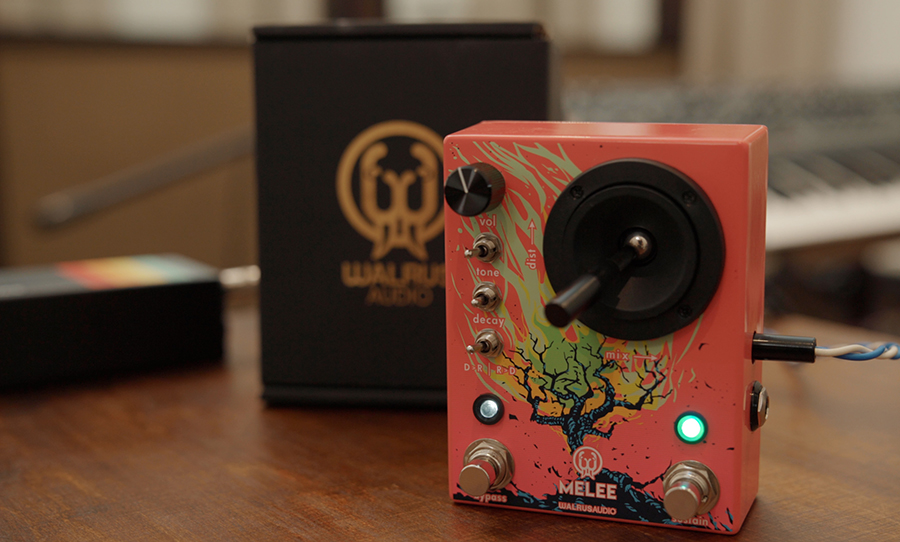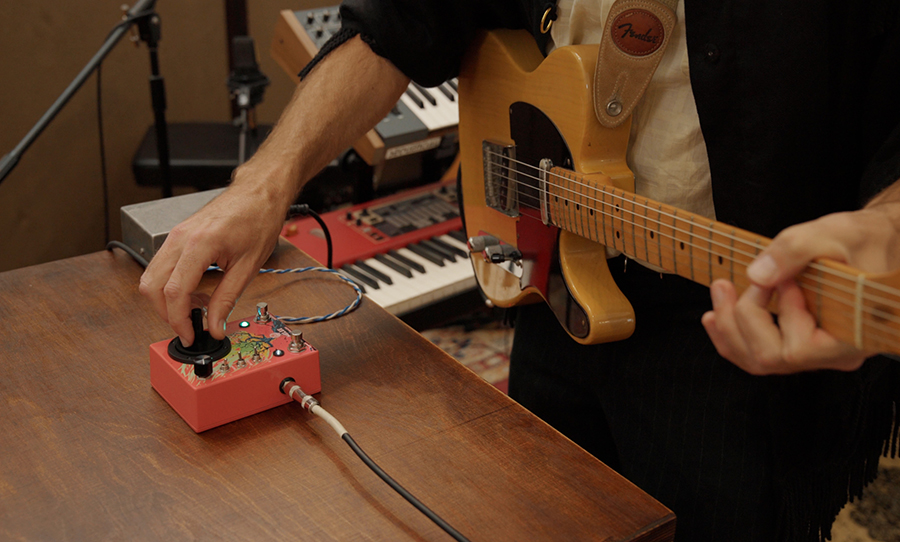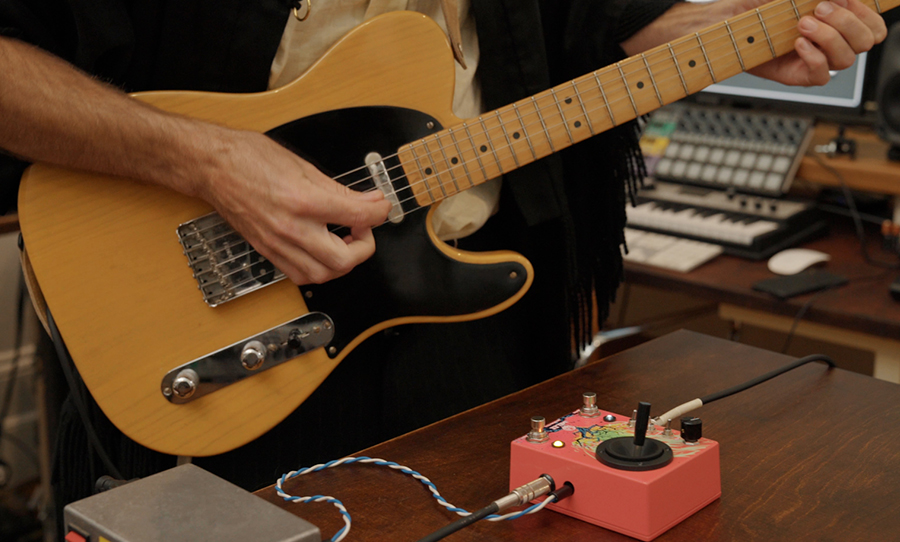Is it reverb? Is it distortion? No, it’s both. Walrus Audio has released The Melee. Complete with a joystick and a tonne of variation, Dan Mac from Art Vs. Science helped us test it out.
Starting off the new year right, Walrus Audio has dropped a brand new pedal: The Melee. It looks like 1984 meets 2024, and it’s an eternity of reverb and distortion, designed to inspire you to create a wall of sound.
We were lucky enough to get a pre-release of the Walrus Audio Melee to try out in our studio — Noise Machines — and to help us explore it was Dan Mac from Art Vs. Science with a soon-to-be-released song from his upcoming solo project The Swirly Train. The song is called Sailing, and he had a blast sending his recorded vocal out to it.
Walrus Audio is a company of musicians and music lovers from Norman, Oklahoma, USA who make pedals that are both interesting to play with and look at, and this release is exactly that.
The Melee combines reverb and distortion in one pedal, with multiple modes, controlled by a joystick and a selection of knobs and switches. There’s a tonne of variation as you can change the distortion tone and gain amount, reverb length and mix/blend, and the order of FX — distortion into reverb or reverb into distortion.
The main event is, of course, the joystick. Although It’s not their first pedal with a joystick, their Janus Tremolo/Fuzz has two! The joystick on the Melee works on an X and Y axis, with distortion up and down and reverb mix left and right.

The distortion has three modes and given it was an early release with no manual, we found that from switching from left to right it had a warm rounded tone in the first position, a slightly gained tone on the middle position, and a maxed out, hi-gained distortion on the far right. It’s a lot more variation than most distortion/overdrive/fuzz pedals.
The reverb has three modes — ambient, octave down, and reverse with feedback — that can be scrolled through by engaging both foot switches. It’s got 3 decay lengths — short, medium and long — all accessed via a 3 way toggle switch. With a bit more time spent we found that a decay knob, rather than set time might be welcome by some users.

The order of effects can be changed via a toggle switch labelled D—>R or R—>D (D=Distortion, R=Reverb) and we’re thrilled they included this feature, as any good guitarist knows that order can make a dramatic tonal difference.
The Melee is controlled by two-foot switches, with Bypass on the left and Sustain on the right. While Bypass is simple, Sustain is not. It turns the reverb off with a feature embedded.
It freezes the last thing you played. For example, with the reverb on, play something and then press the switch (which blinks). It will freeze that part on a sustained loop. You can still control the sound while it’s sustaining — that’s pretty cool!

Dan Mac (Art vs. Science, The Swirly Train) was really impressed with the pedal and found some sweet spots of floating, shoe-gazing electric guitar. He was also really impressed by the variation and tone of the distortion.
I can see the Melee being useful both on stage and studio, although maybe more in studio. With the idea of sending his vocal out to the pedal and using the Sustain/Freeze function we recorded some great vocal throws and vocal sustain moments.

As far as stage goes, I do wonder if you’d not use the pedal to its full potential as it would be down at your feet. This was evident when Dan played an electric guitar part over his song and as he was playing an arpeggiated part he could quickly tweak the pedal as it was on a desk at hand height.
Opinions aside, The Melee is an epic new pedal that’s sure to set a new standard for what creative musicians expect from pedals. They must look vintage, but sound modern — the Melee hits that mark.
For more information on the Walrus Audio Melee head over to their website, Walrusaudio.com.


